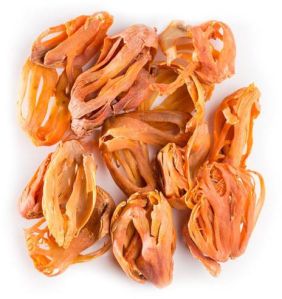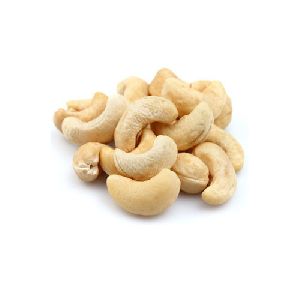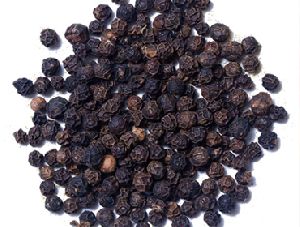
Semi Husked Coconut
300 - 450 Per dozen
1 Ton (MOQ)
Country of Origin : India
Cultivation Type : Natural
Form : Solid
Texture : Hard
Packaging Type : Gunny Bags, Jute Bags
Speciality : Free From Impurities, Freshness, Good Taste
Usage : Pooja, Medicines, Cosmetics, Cooking
...more
Refractories
200,000 - 400,000 Per Tons
CUSTOM MADE SHAPES OF HIGH ALUMINA BRICKS, MULLITE BRICKS
Country of Origin : India
Type : Refractories
Material : Alumina, Clay
Shape : Rectangular, Square
Color : Creamy, Off White
Structure : Solid
Resistance Durability : Fire Resistance, Heat Resistance
...more
Green Cardamom
1,340,000 Per Kilogram
1 Ton (MOQ)
Cardamom of commerce is the dried ripe fruit (capsules of cardamom plant) often referred as the “Queen of Spices” because of its very pleasant aroma and taste. Cardamom is a perennial, herbaceous, rhizomatous plant. Based on the nature of panicles, three varieties are recognized viz. Malabar with prostrate panicle, Mysore with erect panicle, and Vazhukka with semi erect panicle. Plants are of medium size (2 to 3 mtr height) with pubescent leaves (on the dorsal side) and fruits globose in the case of Malabar, whereas plant robust (3 to 4 mtr height) with leaves glabrous on both sides with ovoid capsules in the case of Mysore. Vazhukka variety is a mix of both the above in physical characteristics. Indian cardamom is offered to the international markets in different grades: 'Alleppey Green Extra Bold' (AGEB), 'Alleppey Green Bold' (AGB) and 'Alleppey Green Superior' (AGS) are names that register instant appeal worldwide. Cardamom oil is a precious ingredient in food preparations, perfumery, health foods medicines and beverages. India, a traditional exporter of cardamom to the Middle East countries where it goes mostly into the preparation of 'Gahwa' - a strong cardamom - coffee concoction without which no day is complete or no hospitality hearty for an Arab. Indian cardamom enjoys a premium preference in the Middle East, Japanese and Russians who relish it for its distinct enriching properties. Origin and Distribution Cultivation of cardamom is mostly concentrated in the ever green forests of Western Ghats in South India. Besides India, cardamom is grown as a commercial crop in Guatemala and on small scale in Tanzania, Sri Lanka, El Salvador, Vietnam, Laos, Thailand, Cambodia, Honduras, and Papua & New Guinea. The optimum altitudinal range on growing cardamom is 600 to 1500 mtr above MsL. The cardamom growing regions of South India lies within 8 - 30 degree N latitudes and 75-78 degree longitudes. Uses The major use is for the preparation of ‘gahwa’ – a strong cardamom coffee concoction which is a symbol for hospitality among Arabs. Apart from this cardamom is widely used as a flavouring material in whole and ground form. In Asia, it can add a lingering sparkle to every kind of dishes both traditional and modern. In Scandinavian countries it is used in baked goods and confectionaries. In Europe and North America it is an ingredient in curry powder and in some sausages products. Cardamom oil and oleoresin has applications in flavouring processed foods, cordials, and liquors and in perfumery and in Ayurvedic medicines. Indian Name of Spices Hindi : Chhoti elaichi Bengali : Chhoti elaichi Gujarati : Elaychi Kannada : Yelakki Malayalam : Elathari Marathi : Velchil Oriya : Alaichi Punjabi : Elaychi Sanskrit : Ela Tamil : Yelakkai or Elakkai Telugu : Yealak-Kayulu or Elakkayi Urdu : Ilaychi Foreign Name of Spices Spanish : Cardamomo French : Cardamome German : Kardamom Swedish : Kardemumma Arabic : Hal Dutch : Kardemom Italian : Cardamomo Portuguese : Cardamomo Russian : Kardamon Japanese : Karudamon Chinese : Pai-tou-k'ou
Country of Origin : India
Certification : FSSAI Certified
Cultivation Type : Natural
Shelf Life : 6 Month
Color : Green
Form : Pods
Is It Dried : Yes
Application : Cooking
Specialities : Rich In Taste, Good Quality
...more
Dried Mace
2,300,000 Per Kilogram
1 Ton (MOQ)
Nutmeg & Mace are two distinctly different spices produced from a fruit of an evergreen tree usually 9-12 mtr high. Mace is the dried reticulated ‘aril’ of the fruit and nutmeg is the dried seed kernel of the fruit. The trees are normally unisexual, bearing either male or female flowers. The male flowers are born in clusters, whereas female flowers are often solitary. Fruit is a fleshy drupe, spherical in shape, pale yellow in colour with a longitudinal groove in the centre. When the fruit mature it burst open along the groove exposing the bright attractive mace, covering the hard black, shiny shell of the seed called nutmeg. Origin and Distribution Nutmeg tree is indigenous to Moluccas. The major nutmeg growing areas are Indonesia and Granada. It also grows on a smaller scale in Sri Lanka, India, China, Malaysia, Zanzibar, Mauritius and Solomon Island. Nutmeg thrives well in places with warm humid climate from sea level up to 600 mtrs MSL. It grows on a variety of soils from sandy to clayey loams and red laterite soils with good drainage. A well-distributed annual rainfall of 250 cm is ideal for the crop. Uses Both nutmeg and mace are used as condiment particularly in sweet foods. The spice in the ground form is mainly used in the food processing industry especially as a standard seasoning in many Dutch dishes. Nutmeg oleoresin is used in the preparation of meat products, soups, sauces, baked foods, confectionaries, puddings, seasoning of meat and vegetable etc. The fleshy outer cover of the fruit is crystallized or pickled or made into jellies. Mace is used in savoury dishes. It is used as a drug in Eastern countries because of its stimulant, carminative, astringent and aphrodisiac properties. Excessive doses have a narcotic effect. Nutmeg oil is used in cosmetics and toiletries. Indian Name of Spices Hindi : Jaiphal Bengali : Jaiphal Gujarati : Jaiphal Kannada : Jayikai Kashmiri : Zaaphal Malayalam : Jathikka Marathi : Jaiphal Oriya : Jaiphala Punjabi : Jaiphal Sanskrit : Jatiphala Tamil : Jathikai Telugu : Jajikai Urdu : Jaiphal Foreign Name of Spices Arabic : Jouza at-Teeb Chinese : Dou kou shu Dutch : Nootmuskaat French : Muscade German : Muskatnu Greek : Moschokarido Indonesia : Pala Italian : Noce moscata Spanish : Moscada
Type : Mace
Application : Cooking
Shelf Life : 6 Months
Color : Brownish, Yellow
Form : Whole
Preservatives : No preservatives used
...more
Dried Cloves
860 - 950 Per kg
2 Ton (MOQ)
The clove of commerce is the air-dried unopened flower bud obtained from evergreen medium sized tree. The tree grows to a height of 10-12 mtrs and start flowering in about 7 years. It continues to produce flower buds for 80 or more years. It is a valuable spice of the orient. Clove clusters are plucked by hand when the buds are fully developed with a pronounced pink flush and then dried over several days in the sun. Unopened flower buds, leaves and stalks yield essential oil. Origin and Distribution The plant is indigenous to North Molucca Islands of Indonesia. It is also grown in Zanzibar, Madagascar, Malaysia, Sri Lanka and India. The tree prefers well drained rich soil with sufficient soil moisture throughout the year. High atmospheric temperature (25 to 35 degree C) with heavy sun light, good and well-distributed rainfall (above 150 cm) and high humidity (above 70%) are preferred. Uses The use of clove in whole or ground form is mainly for culinary purposes and as a flavouring agent in food industry. Its flavour blends well with both sweet and savory dishes. It is highly valued in medicine as carminative, aromatic and stimulant. In Indonesia, the lion share of production is consumed in production of ‘kretek’ cigarettes. The antiseptic and antibiotic properties of clove oil are used in medicine especially in dentistry, oral and pharyngeal treatments. It has wider applications in preparations of toothpaste and mouthwashes, soaps and perfumes. It is also reported to help diabetics in sugar assimilations. Indian Name of Spices Hindi : Laung Bengali : Lawang Gujarati : Lavang Kannada : Lavanga Malayalam : Grambu Marathi : Luvang Oriya : Labang Punjabi : Laung Sanskrit : Lavanga Tamil : Kirambu, Lavangam Telugu : Lavangalu Urdu : Laung Foreign Name of Spices Arabic : Kabsh ,Qarunfil Chinese : Ding xiang French : : Clou de girofle Indonesian : Cengkeh German : Nelke
Country of Origin : India
Certification : FSSAI Certified
Cultivation Type : Natural
Shelf Life : 6 Month
Usage : Cooking
Specialities : Rich In Taste, Long Shelf Life, Good Quality
...more
cashew nuts
865,000 Per Kilogram
5 Ton (MOQ)
Type : Dried Fruits
Shelf Life : 12 Months
Color : White
Feature : No Preservatives, High In Protein
Country of Origin : India
...more
Black Pepper
545,000 Per Kilogram
1 Ton (MOQ)
Black Pepper is the dried mature berry of Piper nigrum, a climbing, perennial shrub mostly found in hot, moist region of Southern India. Under cultivation pepper vines are trailed over support as columns, 5-6 mtr tall, 1-2 meter diameter. The climbing woody stems have swollen nods with clinging roots at each node, which helps in anchoring the vine to the support trees (standards). It has straight upward growing main stem and have lateral shoots from the axils of the leaves having shorter inter nodes without adventitious roots. In such branches the terminal buds get modified into an inflorescence (spike) and the auxiliary buds continue further growth. The root system confined to 75-100 cm radius and depth. The inflorescence is a pendent spike, 3-15 cm long with 50-150 flowers. Flowers are minute, white pale yellow, arranged spirally on fleshy pedantries. The specie is naturally self-pollinated and pollen dispersal is aided by the presence of water droplets. Fruit is a single seeded drupe often called berry. It is spherical in shape, green in colour, changing to red on ripping. Origin and Distribution Pepper is considered originated in the hills of South Western Ghats of India. It is now grown in Indonesia, Malaysia, Sri Lanka, Thailand, China, Vietnam, Cambodia, Brazil, Mexico, and Guatemala apart from the country of origin. Pepper requires hot and humid climate and grows between 20 degree North and South latitudes, from sea level to up to 1500 meters above MSL. The crop tolerates temperatures between 10 degree and 40 degree C. A well-distributed annual rainfall of 125 to 200 cm is considered ideal for pepper. Uses Pepper is largely used by meat packers and in canning, pickling, baking, considering for its preservative value. It has the ability to correct the seasoning of dishes, therefore used as a final dash at the end of cooking to effectively adjust the flavour. It is an important component of culinary seasoning of universal use and is an essential ingredient of numerous commercial foodstuffs. It is also used as an ingredient in spice mixes. White pepper is used in products like mayonnaise where, black specks of black pepper is not liked. Other products in use are pepper oil, oleoresin, micro encapsulated pepper, green pepper in brine, dehydrated green pepper, frozen pepper etc. Black pepper is an essential ingredient in Indian system of medicine. Piperine, the pungent principle in pepper oleoresin helps to enhance bio-availability and therefore used in pharmaceuticals. The major functional properties of pepper are analgesic, anti-pyretic, anti-oxidant and anti-microbial. Indian Name of Spices Hindi : Kali mirch Bengali : Kala morich, golmorich Gujarati : Kalamari, kalomirich Kannada : Kare menasu Kashmiri : Marutis Malayalam : Kurumulaku, nallamulaku Marathi : Mira, kali mirch Oriya : Gol maricha Punjabi : Kali mirch Sanskrit : Marich ushna, hapusha Tamil : Milagu Telugu : Miriyala tige Urdu : Kali mirch, Siah mirch Foreign Name of Spices Spanish : Pimienta French : Poivre German : Pfeffer Swedish : Peppar Arabic : Filfil Aswad Dutch : Peper Italian : Pepe Portuguese : Pimenta Russian : Pyerets Japanese : Kosha Chinese : Hu-Chiao
Country of Origin : India
Certification : FSSAI Certified
Cultivation Type : Natural
Shelf Life : 6 Month
Color : Black
Form : Seeds
Uses : Cooking
Specialities : Rich In Taste, Long Shelf Life, Good Quality
...moreBe first to Rate
Rate ThisOpening Hours
Sunglobal Exim Pvt. Ltd. is a professionally managed firm in Pune, Maharashtra, with many years of expertise in the field of exporting unique Indian spices. We strive for long-term business ties with our clients based on solid corporate ethics. We are devoted to maintaining high-quality standards for the items we supply and always meet our delivery deadlines.
The company\'s ability to satisfy client requirements quickly and at cheap costs has been its main strength, allowing it to build a loyal and increasing customer base in the worldwide market. We keep an eye on the constantly changing worldwide market landscape.
Our Mission:
To be the chosen supplier of spices to our discriminating consumers by upholding the highest standards of excellence and developing goods that delight them.
Sourcing:
The firm has successfully partnered with reputable suppliers at various manufacturing sites that are outfitted with advanced and automatic machinery that entirely remove human mistake and processing is done in the most sanitary settings. Our suppliers in the manufacturing centres continue to provide us with reliable market information daily, allowing us to assess market trends and update our clients appropriately, allowing them to plan their acquisition schedules more effectively.
Quality Assurance:
Our company\'s slogan and goal have always been product quality; we cultivate an experienced staff of quality analysts that examine the reliability of our products at every stage, from procurement to final shipping.